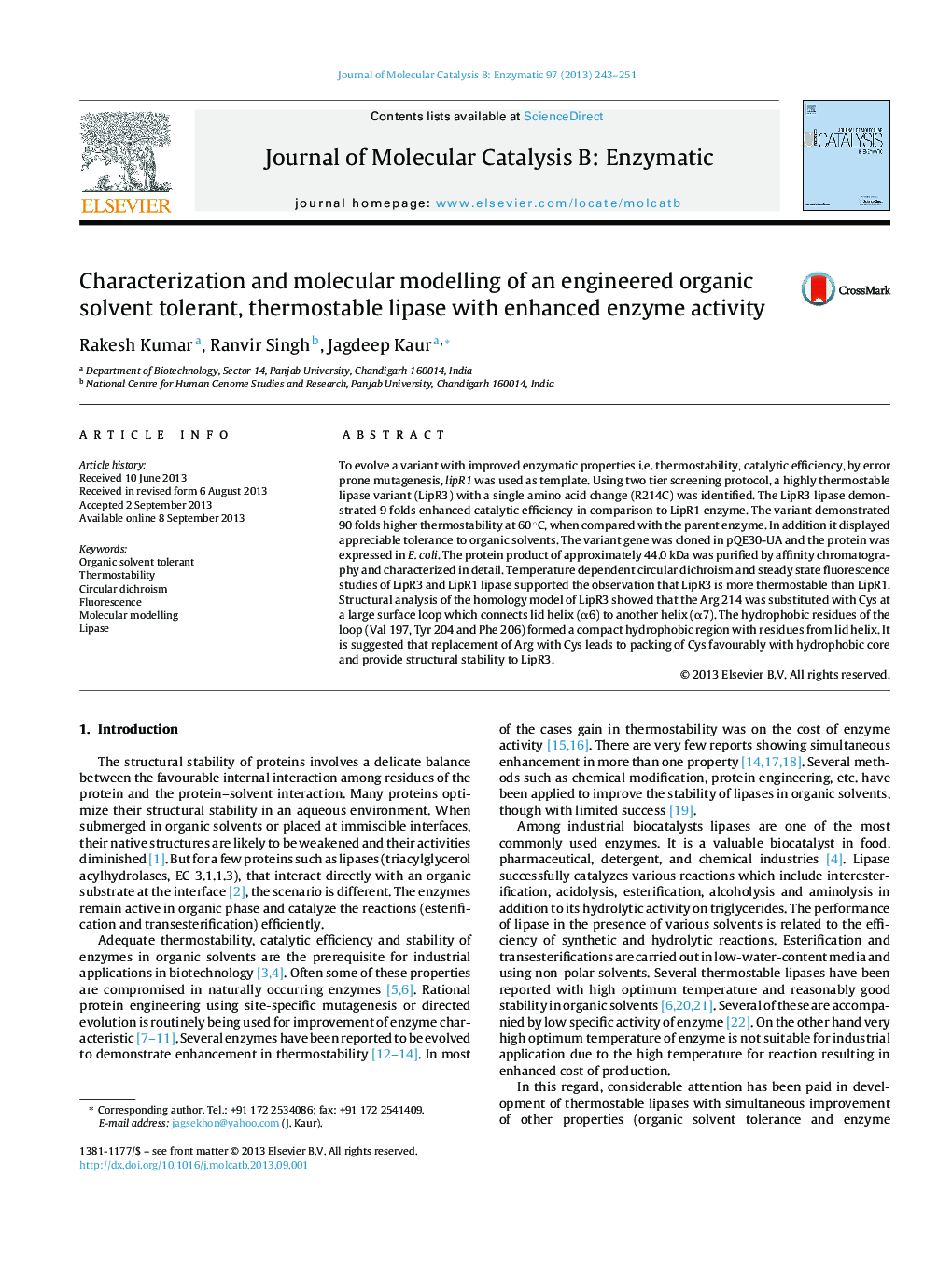| Article ID | Journal | Published Year | Pages | File Type |
|---|---|---|---|---|
| 69614 | Journal of Molecular Catalysis B: Enzymatic | 2013 | 9 Pages |
•A lipase variant LipR3 (R214C) was generated by directed evolution.•The variant LipR3 was characterized in detail.•It showed 90 fold enhanced thermostability at 60 °C as compared to wild type.•It also showed approximately 9 fold enhancement in specific activity.•The enzyme was also tolerant to organic solvents.
To evolve a variant with improved enzymatic properties i.e. thermostability, catalytic efficiency, by error prone mutagenesis, lipR1 was used as template. Using two tier screening protocol, a highly thermostable lipase variant (LipR3) with a single amino acid change (R214C) was identified. The LipR3 lipase demonstrated 9 folds enhanced catalytic efficiency in comparison to LipR1 enzyme. The variant demonstrated 90 folds higher thermostability at 60 °C, when compared with the parent enzyme. In addition it displayed appreciable tolerance to organic solvents. The variant gene was cloned in pQE30-UA and the protein was expressed in E. coli. The protein product of approximately 44.0 kDa was purified by affinity chromatography and characterized in detail. Temperature dependent circular dichroism and steady state fluorescence studies of LipR3 and LipR1 lipase supported the observation that LipR3 is more thermostable than LipR1. Structural analysis of the homology model of LipR3 showed that the Arg 214 was substituted with Cys at a large surface loop which connects lid helix (α6) to another helix (α7). The hydrophobic residues of the loop (Val 197, Tyr 204 and Phe 206) formed a compact hydrophobic region with residues from lid helix. It is suggested that replacement of Arg with Cys leads to packing of Cys favourably with hydrophobic core and provide structural stability to LipR3.
Graphical abstractFigure optionsDownload full-size imageDownload as PowerPoint slide
